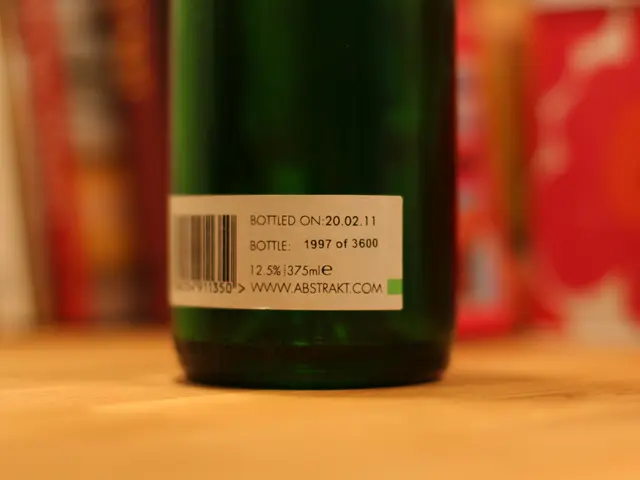Distinguishing age spots from skin cancer: Recognizing the contrasts for proper identification
Laid-Back Lowdown on Age Spots and Skin Cancer
Skin blemishes can be a bother, and understanding the difference between age spots and skin cancer is essential for early detection and treatment. Here's a quick and easy guide to spot the differences!
What's the Deal with Age Spots and Skin Cancer?
Age spots and skin cancer might look alike, but they differ in various aspects such as appearance, symptoms, and treatment options.
Age Spots
Age spots, also known as solar lentigines or liver spots, come in the form of darker patches on your skin. They're usually flat and smooth, with well-defined borders, and can be yellow, brown, or gray. These harmless marks often pop up on sun-exposed areas like your face, hands, shoulders, feet, arms, and back. They're most common in middle age and fair-skinned individuals [1].
Skin Cancer
Unlike age spots, skin cancer is harmful and demands attention. It's most likely to appear on areas that see plenty of sun exposure. Skin cancer can develop due to damage from UV radiation as well as other environmental or genetic factors. The three most common types of skin cancer are basal cell carcinoma, squamous cell carcinoma, and melanoma [2]. Another precancerous growth that might be mistaken for an age spot is actinic keratosis [3].
Can Age Spots Become Cancer?
No, age spots cannot turn into cancer. However, you should keep an eye on changes in actinic keratosis, as it can potentially develop into cancer if left untreated [3].
Symptom comparison
Age spots and skin cancer exhibit unique differences that can help you identify which condition you're dealing with:
Age Spot Symptoms
- Flat and smooth
- Defined borders
- Yellow, brown, or gray color
- Size can vary from millimeters to centimeters
- Appears on sun-exposed areas
Skin Cancer Symptoms
- Asymmetrical shape
- Irregular boundaries
- Changing size, color, shape, or location
- Multiple colors on the same spot
- Itching, bleeding, or oozing
- Crusty or scaly patches
When to See a Doctor
Get in touch with a medical professional if you notice any changes on your skin that concern you or persist for more than a few weeks [4]. Early detection of skin cancer can make it easier to treat and improve health outcomes.
Diagnosis and Treatment
Diagnosing age spots and skin cancer requires a doctor's expertise. A physical examination of the spot can help determine its nature. If needed, a skin biopsy might be conducted to test for other conditions [4].
Treatment options for age spots can range from topical creams to chemical peels, laser treatments, and more. The choice of treatment depends on the individual's preference and the severity of the age spots [5].
Skin cancer treatment varies depending on the type, stage, and location of the cancer, as well as the patient's overall health. Early-stage cancers are treatable with procedures like excision or Mohs surgery, while more advanced cases may require chemotherapy, radiation therapy, or immunotherapy [3][4].
So, there you have it! While age spots are generally harmless, skin cancer requires medical attention to avoid any health risks. Keep an eye on your skin, and if something seems off, consult a healthcare professional for peace of mind.
Enrichment Insights:
- Age spots are harmless blemishes that form due to excess melanin production to protect the skin from UV radiation, most commonly in fair-skinned individuals.
- Skin cancers, like melanoma, basal cell carcinoma, and squamous cell carcinoma, can appear irregular in shape and color and might be mistaken for age spots or other harmless markings.
- Actinic keratosis is a precancerous growth that can mimic age spots but potentially develop into cancer if left untreated.
- It's crucial to consult a healthcare professional if you experience unusual changes in your skin or have concerns about potential skin cancers or precancerous growths.
- The differences between age spots and skin cancer are essential for early detection, as both may appear similar but have varying symptoms and treatment options.
- While age spots cannot become cancerous, actinic keratosis, a precancerous growth, might develop into skin cancer if left untreated.
- Symptoms of age spots include flat, smooth, defined patches in yellow, brown, or gray colors, while skin cancers show asymmetry, irregular boundaries, changes in size, color, or location, and may be accompanied by itching, bleeding, or oozing.
- When in doubt, seeking the expertise of a dermatologist or oncologist is crucial for accurate diagnosis and effective treatment of both age spots and skin cancers.
- Science continues to evolve in understanding various medical conditions, including skin-related issues such as cancer, melanoma, and skin-care, aiming to improve the health-and-wellness outcomes of seniors and others by discovering new diagnostic tools, treatments, and prevention methods.







